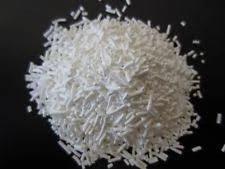
e450 food additive
Understanding E450 The Food Additive You Need to Know
When it comes to food production, additives play a crucial role in enhancing the quality, safety, and shelf-life of products. One such additive is E450, a member of the phosphate additive family. Understanding E450 and its applications in food can help consumers make informed choices about what they eat.
What is E450?
E450, also known as diphosphates or pyrophosphates, is a food additive that serves primarily as an emulsifier, stabilizer, and thickening agent. It is derived from phosphoric acid and occurs naturally in various foods, including certain meats and fish. E450 can be produced synthetically and is commonly used in processed foods for its functional properties.
Functions of E450 in Food
E450 has several essential roles in food products
1. Emulsification E450 helps mix ingredients that typically do not blend well, such as oil and water. This makes it an essential component in salad dressings, sauces, and mayonnaise.
2. Stabilization By stabilizing mixtures, E450 helps maintain the desired texture and consistency of products. This is particularly important for dairy products, such as cream cheese and processed cheeses, where smoothness is key.
3. Thickening E450 can enhance the thickness and creaminess of various food products, improving mouthfeel and overall consumer experience.
4. Moisture Retention E450 can help retain moisture in foods, which is beneficial for baked goods, meats, and frozen products. This property helps prevent drying out and maintains freshness.
Common Foods Containing E450
e450 food additive

You might be surprised to find E450 in various everyday products. It is often used in
- Processed Cheese Enhances texture and melting properties. - Deli Meats Helps retain moisture and improves flavor. - Pasta Products Used in some dried pasta varieties to enhance shelf-life. - Frozen Foods Acts as a stabilizer to maintain quality during freezing and thawing. - Bakery Goods Enhances texture and moisture retention.
Is E450 Safe?
E450 is generally recognized as safe (GRAS) by food safety authorities, including the European Food Safety Authority (EFSA) and the U.S. Food and Drug Administration (FDA). However, like any food additive, excessive consumption can lead to health concerns.
Phosphates, while necessary for bodily functions, can be harmful in large quantities, especially for individuals with certain health conditions, such as kidney disease. High phosphate levels have been associated with bone and cardiovascular issues. Therefore, moderating intake of foods high in phosphates, including those containing E450, is advisable.
Consumer Awareness and Label Reading
In a world where health and nutrition awareness is on the rise, consumers are becoming increasingly interested in understanding the ingredients in their food. It is essential to read food labels carefully to track the presence of additives like E450. While it is a safe ingredient, individuals should be mindful of their overall phosphate consumption.
Some consumers prefer to avoid additives altogether and may choose organic or minimally processed foods as alternatives. This is a personal choice, and it’s crucial to balance convenience and health when selecting food products.
Conclusion
E450, or diphosphate, is a versatile and widely utilized food additive that plays a vital role in enhancing the texture, stability, and shelf-life of various products. While it is considered safe by regulatory authorities, awareness of its presence in food can empower consumers to make more informed choices regarding their diet. As with any food ingredient, moderation and balance are key to maintaining optimal health. So, the next time you're at the grocery store, take a moment to check those labels and understand what’s really in your food.
-
Why Glacial Acetic Acid Food Grade Is Essential in FlavorNewsMay.26,2025
-
Surging Export Growth of Food Additives in ChinaNewsMay.26,2025
-
How Ammonium Nitrate Fertilizer Boosts Crop YieldsNewsMay.26,2025
-
How 1,2,3-Benzotriazole Shields Plastics from UV DegradationNewsMay.26,2025
-
Cyanide in Gold Mining: Protecting People and the PlanetNewsMay.26,2025
-
Aluminum Hydroxide in Modern Sunscreen FormulationsNewsMay.26,2025
-
Understanding Synthetic Rubber OptionsNewsApr.27,2025
Hebei Tenger Chemical Technology Co., Ltd. focuses on the chemical industry and is committed to the export service of chemical raw materials.
-

view more DiethanolisopropanolamineIn the ever-growing field of chemical solutions, diethanolisopropanolamine (DEIPA) stands out as a versatile and important compound. Due to its unique chemical structure and properties, DEIPA is of interest to various industries including construction, personal care, and agriculture. -

view more TriisopropanolamineTriisopropanolamine (TIPA) alkanol amine substance, is a kind of alcohol amine compound with amino and alcohol hydroxyl, and because of its molecules contains both amino and hydroxyl. -

view more Tetramethyl Thiuram DisulfideTetramethyl thiuram disulfide, also known as TMTD, is a white to light-yellow powder with a distinct sulfur-like odor. It is soluble in organic solvents such as benzene, acetone, and ethyl acetate, making it highly versatile for use in different formulations. TMTD is known for its excellent vulcanization acceleration properties, which makes it a key ingredient in the production of rubber products. Additionally, it acts as an effective fungicide and bactericide, making it valuable in agricultural applications. Its high purity and stability ensure consistent performance, making it a preferred choice for manufacturers across various industries.











